I seriously underestimated the Everest Base Camp trek difficulty.
I mean, it’s a hike to the base of Mount Everest, not the summit.
This is just one of the reasons why I didn’t think it would be so hard.
Another reason for my overconfidence is that I’d previously summited Mount Kilimanjaro, the highest point in Africa.
Everest Base Camp couldn’t be more difficult, right?
Wrong!
Trekking to Everest Base Camp is tough and will push you to your limits. But it is an achievable goal for most people.
You don’t need to be an Olympic athlete or a high-altitude mountaineer, but you need to be prepared for what’s in store for you during your time in the mountains.
So, for everyone asking how difficult is Everest Base Camp trek, this post has got you covered. I answer all your questions regarding training, altitude sickness, and what you can do to make your trek easier.
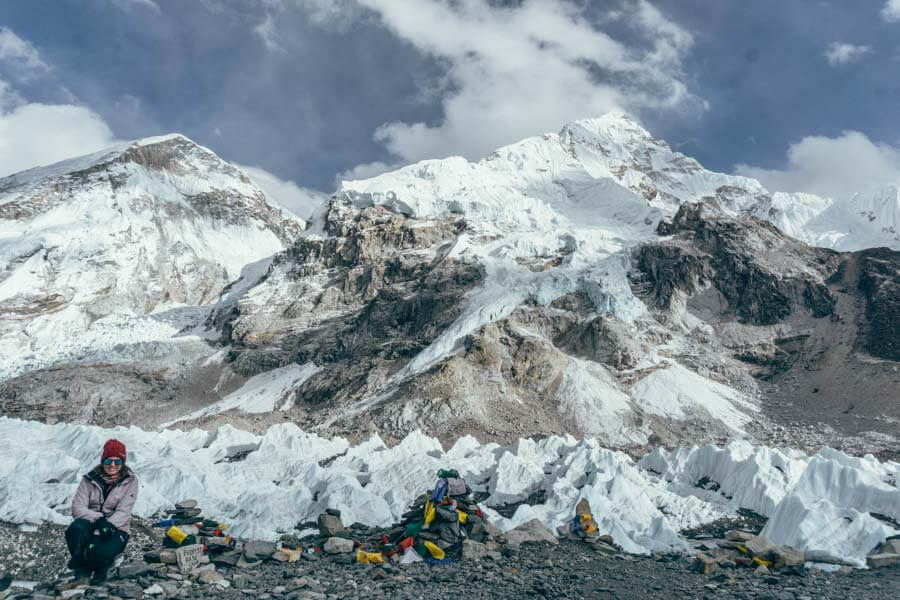
Torn Tackies contains affiliate links. If you make a purchase using one of these links, I may receive compensation at no extra cost to you. See my disclosure for more information.
Quick Navigation
12 Things About EBC Trek Difficulty
1. Trekking at high altitude
If there’s one thing that makes the Everest Base Camp trek difficult, it’s the high altitude!
You won’t understand the effects that altitude has on your body until you’re hiking 4,000 m above sea level.
The gradual incline doesn’t feel so gradual, your light backpack doesn’t feel so light, and the nearby resting spot doesn’t feel so close.
Every step is that much harder, and every breath is a struggle.
You won’t be walking fast – because your body physically can’t.
Also, your sleep is disturbed, and you’ll lose your appetite. It’s not fun! (but it’s worth it)
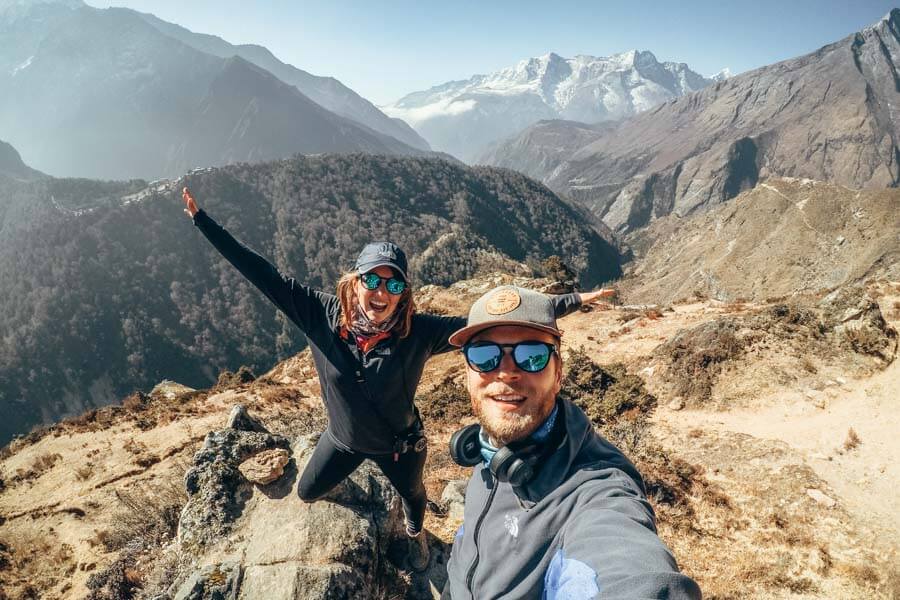
2. Acute Mountain Sickness
After day 1, you’ll soon start to feel the effects of hiking at altitude.
This includes headaches and fatigue and will only make the trek tougher.
AMS (Acute Mountain Sickness) is a common occurrence and can be fatal.
If you’re developing a headache, loss of appetite, or other symptoms, make sure you proceed with caution. If it gets worse and your guide is concerned about your safety, turn around immediately.
Tips for beating Altitude sickness
- The best way to cure AMS is to go down to a lower elevation
- Drink lots of water
- Walk slowly (it’s not a race)
- Stop frequently
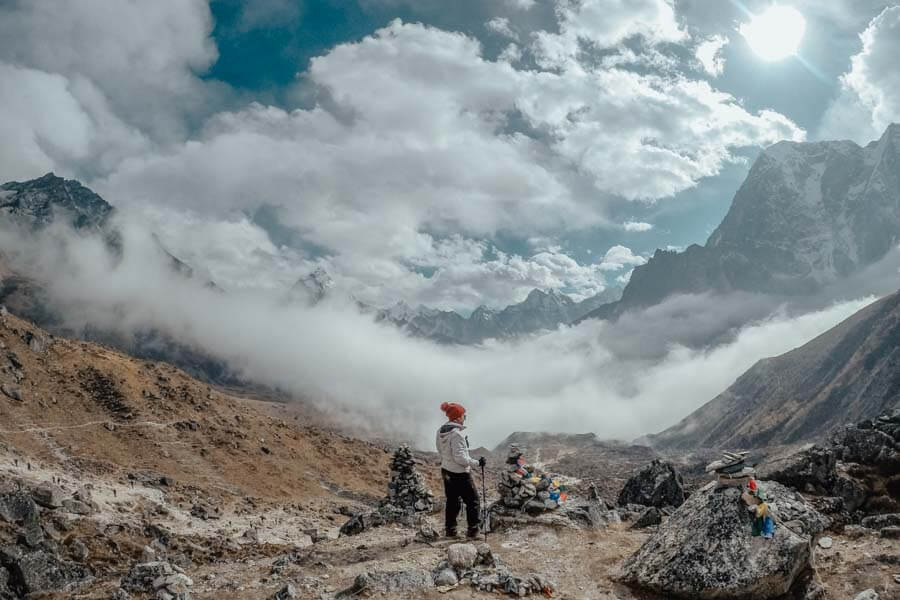
3. Training for Everest Base Camp Trek
I am living proof that you can trek to Everest Base Camp with no training. But I do not recommend it at all!
After backpacking Asia for 4 months, I decided to end my trip with a bucket list activity: Everest Base Camp.
This meant that I’d be spending all my time on the beach in the lead-up to the trek. Not the gym.
Having now been there and done that, I can honestly say that one of the main factors that made my Everest Base Camp trek difficult was not doing enough training.
But, I still made it to the finish line and sumitted Island Peak a few days later.
The trek was extremely tough, but here’s my theory of why I made it.
The slower you walk, the better! Taking frequent stops helps your body adjust to the altitude change. Perhaps not being as prepared or fit as others worked in my favor because I walked at a snail’s pace and stopped every few minutes.
So yes, you can do Everest Base Camp with no training. But everyone’s body is different, and your level of tolerance and strength will be different from mine.
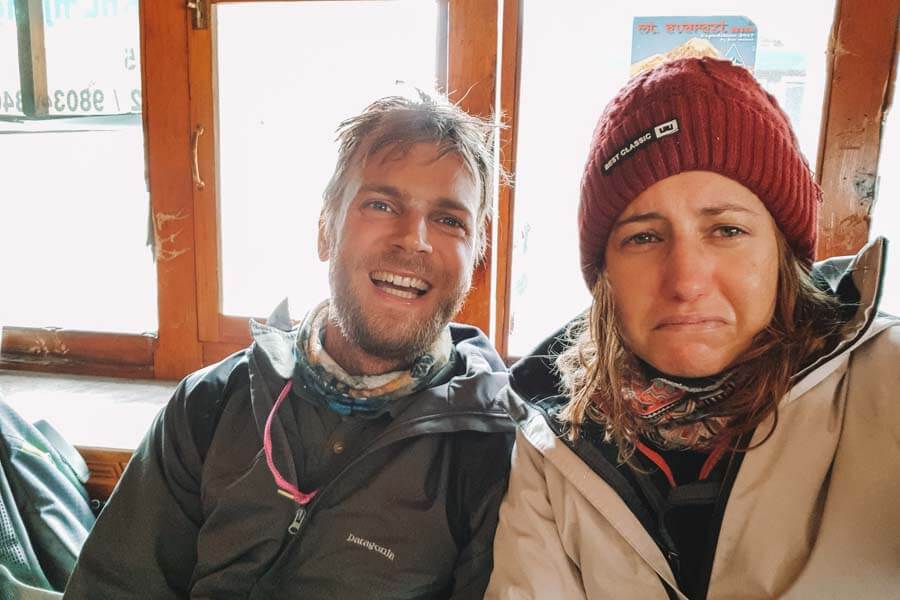
Recommended training for EBC
If possible, try to spend as much time at the gym as you can.
Walk on an incline on the treadmill. Build up strength in your legs. Do squats, lots of squats.
Go for long walks or hikes and wear a small day bag with about 5kg in weight. And take the stairs rather than the elevator.
It’s not a sprint, so you don’t need to be super fit and you don’t need to go all out on your training.
But, getting to Everest Base Camp involves long days of trekking, uphill, and downhill climbs, and your legs and knees will take strain.
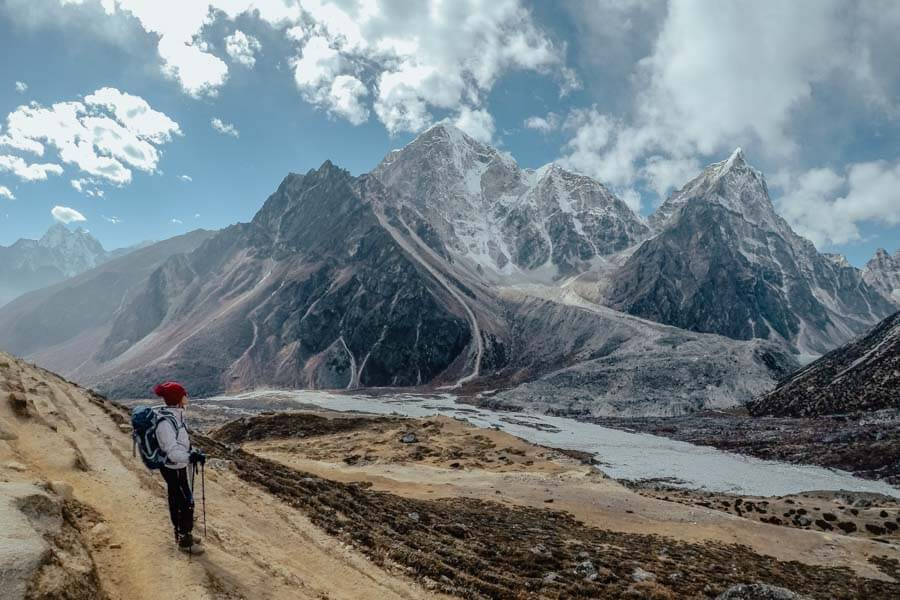
4. Everest Base Camp weather
If you’re looking for the best months to plan your trip, I would recommend pre-monsoon (March, April, May) or post-monsoon (October, November).
You’ll most likely find the trek to be easier during these months as the weather conditions are optimal. But you can still have 4 seasons in one day!
One minute you’re boiling hot, wearing only a T-shirt, and then suddenly, the clouds start rolling in, and you’ll rush to get your warm clothes out and layer up.
Everest Base Camp monsoon season
The monsoon season in Nepal runs from June until August. The trails are still open, but the weather is not ideal.
The winter months of December, January, and February bring with them harsh and freezing cold conditions. This only adds to your Mount Everest Base Camp trek difficulty.
But, for some hikers, the quieter routes and snow-laden mountains make this one of their preferred times to trek to base camp.
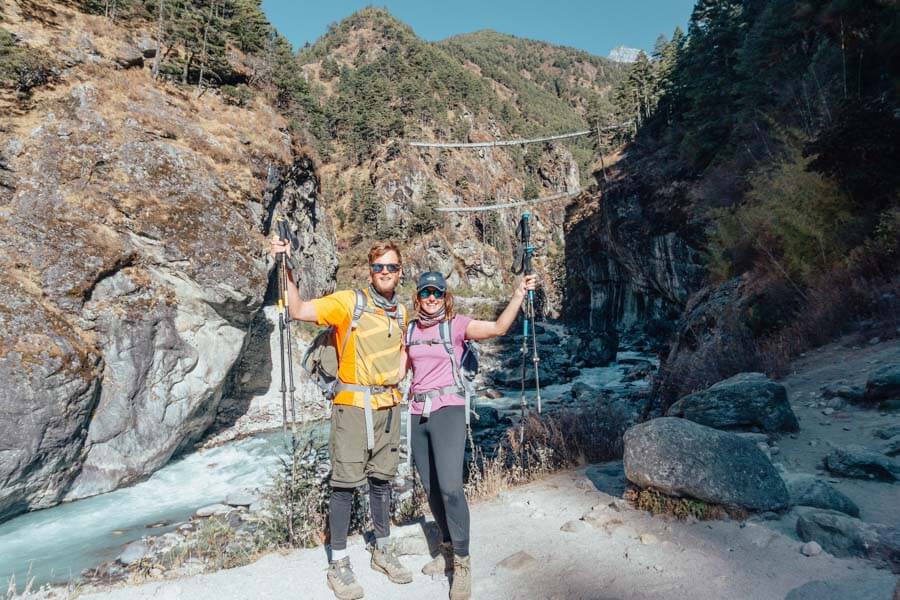
5. Pack the right clothes
Speaking of the seasons and how they’ll affect your EBC trek difficulty, make sure you pack correctly.
I rocked up in Kathmandu with no hiking gear except a pair of hiking boots! So, I spent my first 2 days shopping. I bought everything in Thamel and paid a fraction of what you’d pay elsewhere.
Quality-wise, all my gear got me through the 3 weeks of trekking, and most of it is still going strong!
Also, make smart decisions about what and how you pack for Everest Base Camp.
You’re only allowed 10kg of checked-in luggage on the flight to Lukla.
If you don’t have a porter, you’ll need to carry all this gear to EBC, which adds to your trek difficulty.
Here are a few packing tips
- It’s cold: layer up and bring two pairs of thermal pants and tops.
- Get the best sleeping bag and include a liner. It’s chilly on the mountain, and you want to get a good night’s rest.
- Trekking poles really help with all the uphill and downhill climbing.
- Get a hydration pack so that you’re constantly hydrated.
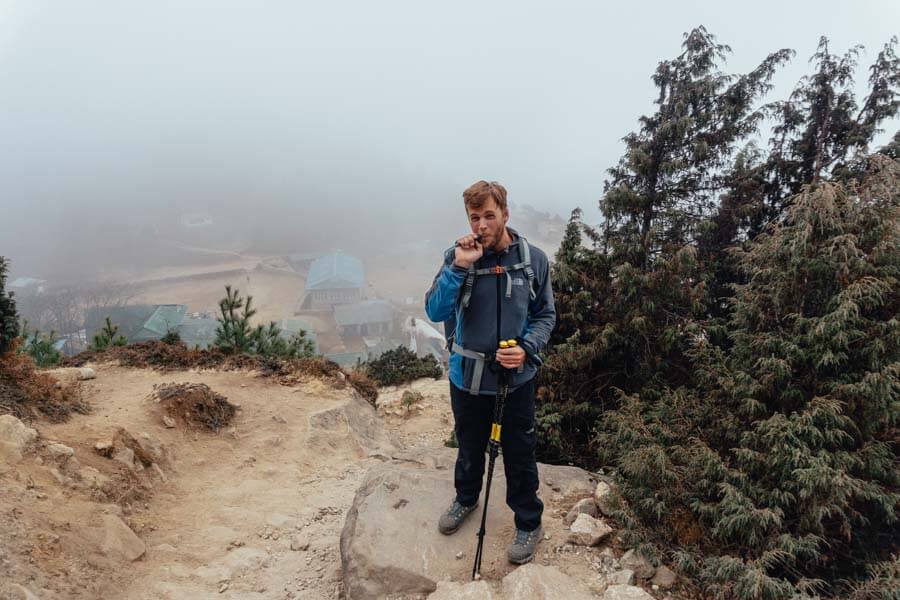
6. Your route & how it affects your Everest Base Camp trek difficulty
Most trekkers choose a 12-day Everest Base Camp trek which allows for 9 days to get to base camp.
Some do it faster, others slower.
At a minimum, you should allow for rest days at 2 stops along the route: Namche Bazaar and Dingboche.
This means you’ll spend an extra night at each of these places.
Acclimatization walks
But the extra night doesn’t mean that you have an “off day”.
During these acclimatization days, it’s important to do a day trek to a higher altitude point before returning to where you’re based.
If you choose not to allocate rest days to their schedule, you may struggle later on and find your Everest Base Camp trek more difficult.
Take a look at my trekking itinerary with the route I chose. It follows the uncrowned trail and has the perfect acclimatization schedule.
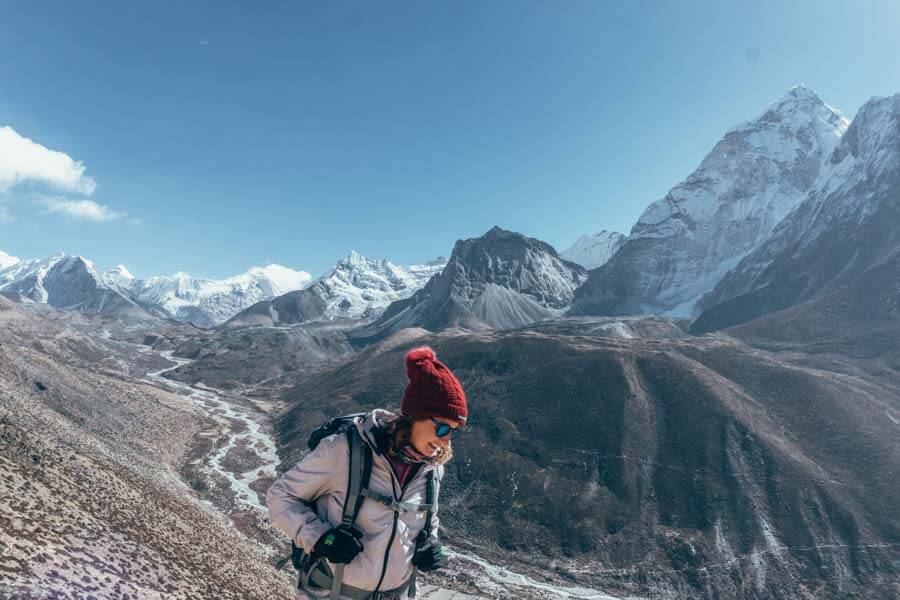
7. The trekking time to Everest Base Camp
The time on the mountain is one of the biggest factors that contribute to how difficult Everest Base Camp trek is.
The round-trip hike from Lukla to EBC is 130 km. You’ll cover this in 12 days.
On average, you’ll trek 10 km per day, mostly uphill and at high altitudes.
Expect to spend 7 to 10 hours daily on the route. You’re constantly moving and packing, and the days are long and tiring.
Going like this for 12 days, non-stop, will take its toll on you, and the time on the mountain is tough.
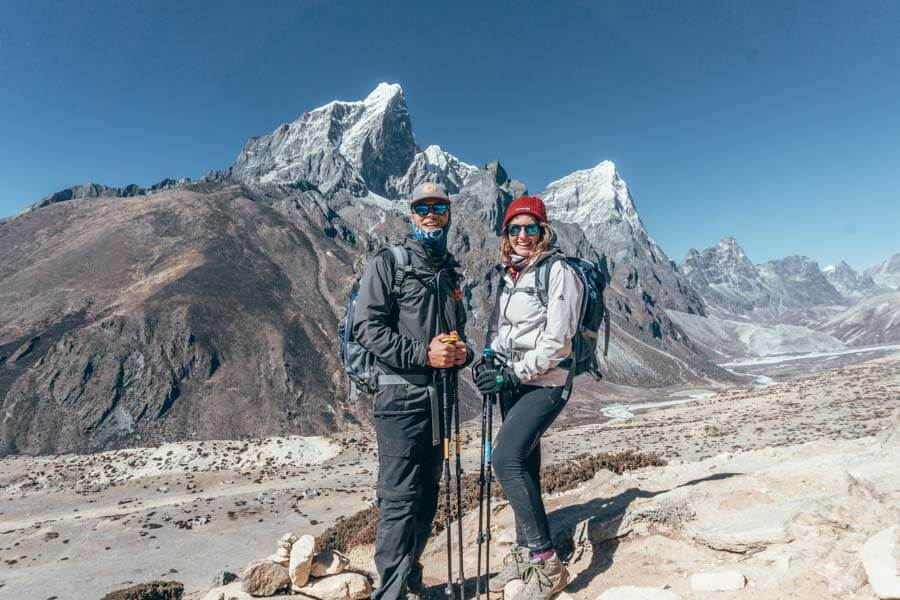
8. the Khumbu Cough
So, you’re walking slowly, one step at a time. You’re following my recommended itinerary. You’ve packed correctly and warmly.
Surely reaching Everest Base Camp can’t be that difficult if you’re this prepared.
Wrong!
Firstly, the Khumbu cough is inevitable. Everyone gets it.
What’s this “Khumbu Cough” you may ask?
Well, due to many factors, including the dust, high altitude, and low humidity, your throat will start to act up. You’ll be coughing non-stop when trekking near the Khumbu Valley on your way to base camp.
You’re not sick, per se, but you’re coughing the entire time!
This just makes breathing harder and adds to your EBC trek difficulty.
To prevent this, I highly recommend wearing a thin buff like this from day one.
I didn’t, and I had a serious case of the Khumbu cough. Gary, on the other hand, wore a buff from the start and wasn’t coughing as much.
Also, drink a cup of ginger and lemon tea every day, stay hydrated, and force yourself to eat even if you don’t feel like it.
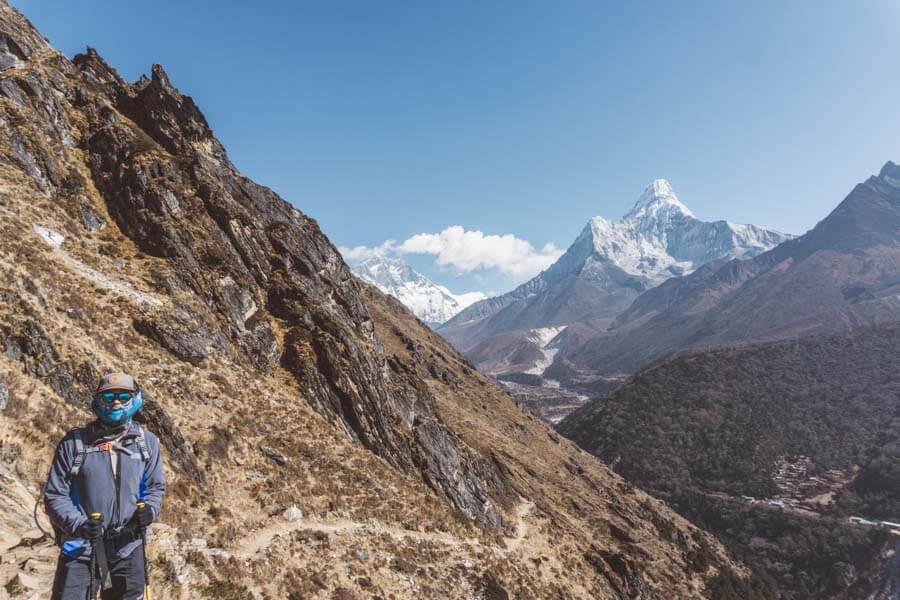
9. Trek to Everest Base Camp with a tour operator or independently
2023 Update: You can no longer trek to Everest Base Camp independently. You need to have a guide.
But you have the choice of using an independent private guide. Or booking with a larger tour group.
Everyone has their own opinion on this one.
Some people prefer to trek independently and not as part of a tour. Their reasoning is that if you’re in a big tour group, you won’t have the freedom to trek at your own pace.
This may result in you walking faster than you should. Or not being able to stop as frequently as you want to, adding to your Everest Base Camp trek difficulty.
This is why you need to do your research on the trekking company you’re joining.
How many people are in the group? How many guides will there be? What are the reviews saying?
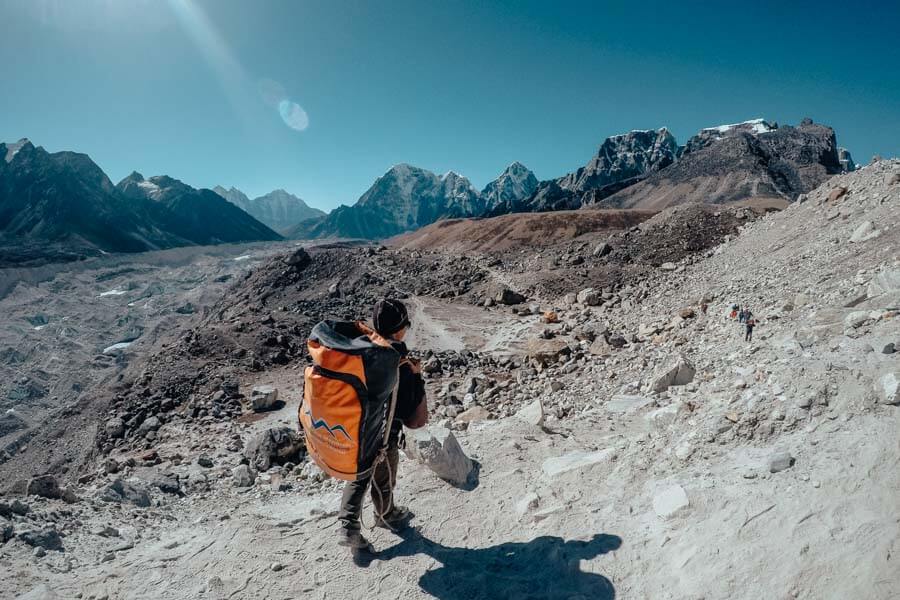
Why I chose to Everest Base Camp with a tour
I had 5 people on my tour with Mountain Monarch.
We had two guides who ran the show. One guide at the front with the fast people. And a guide at the back with the slow people – me.
Each and every day, I was the last person to arrive at our tea house, but I never felt rushed or pressured to move faster.
Perhaps if the tour group consisted of 10 people and only two guides, it would have been a different story.
I loved the support, the humor, and the motivation of going with a tour group. As you get closer to Everest Base Camp, you’re going to need all the encouragement you can get.
If you’re traveling in a group of 4 or hiking to Everest Base Camp as a family with your kids, then I recommend a private tour or getting an independent guide.
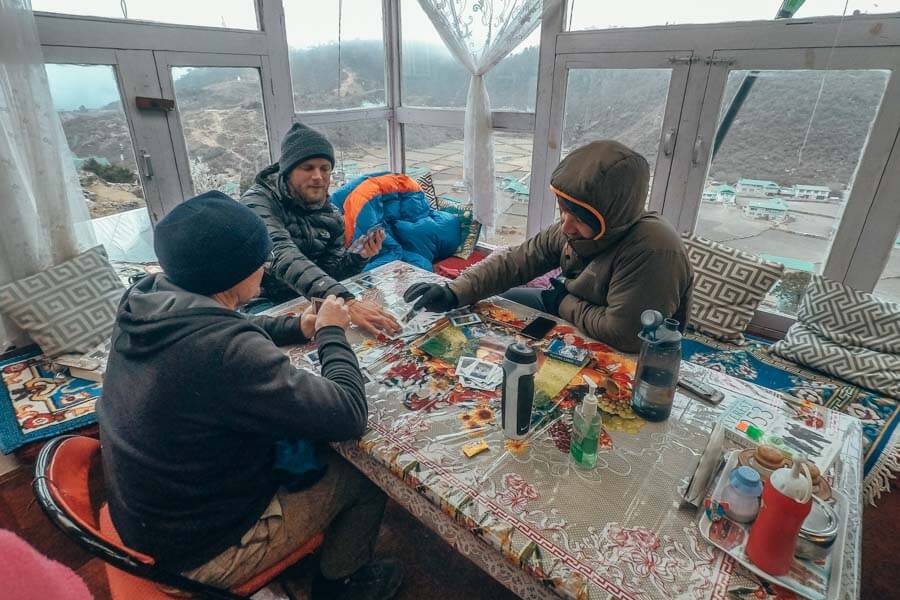
10. Hardest part of Everest Base Camp trek
From my experience, the hardest part of the Everest Base Camp trek was day 8, when we walked from Dingboche to Lobuche.
It was brutal!
The path starts easy – a short incline out of Dingboche toward Everest Base Camp.
But then, you reach Dukla, and the trail shoots up sharply.
For the next 2 hours, you’re crisscrossing up a steep section to the EBC memorial.
At this high altitude, it’s an excruciatingly difficult section, and I really struggled to move and breathe.
But I made it.
11. Comfort levels
In all fairness, you’re trekking to Everest Base Camp. It’s not a luxurious getaway, and at over 3,500 m, you honestly can’t expect much.
You’ve signed up for the adventure, and this all adds to the experience.
Here’s what you should expect.
Showers and toilets
I never knew how much I would miss feeling clean – until I had my first shower in over 10 days.
10 days of being filthy, stinky, and dirty!
And the toilets – don’t get me started.
As you get closer to Everest Base Camp, the conditions get worse, and your beautiful flushing toilets are replaced with bucket toilets. It’s rough.
Never used a bucket toilet? Well, basically, the toilet is a hole in the ground.
Alongside the toilet is a huge bucket with a smaller one inside. You scoop the water to “flush” the toilet.
The problem is, as you get higher to Gorak Shep, this water is frozen, making the toilets unflushable!
It’s just not very nice, and if you’re not used to roughing it up, you may find this rather unpleasant!
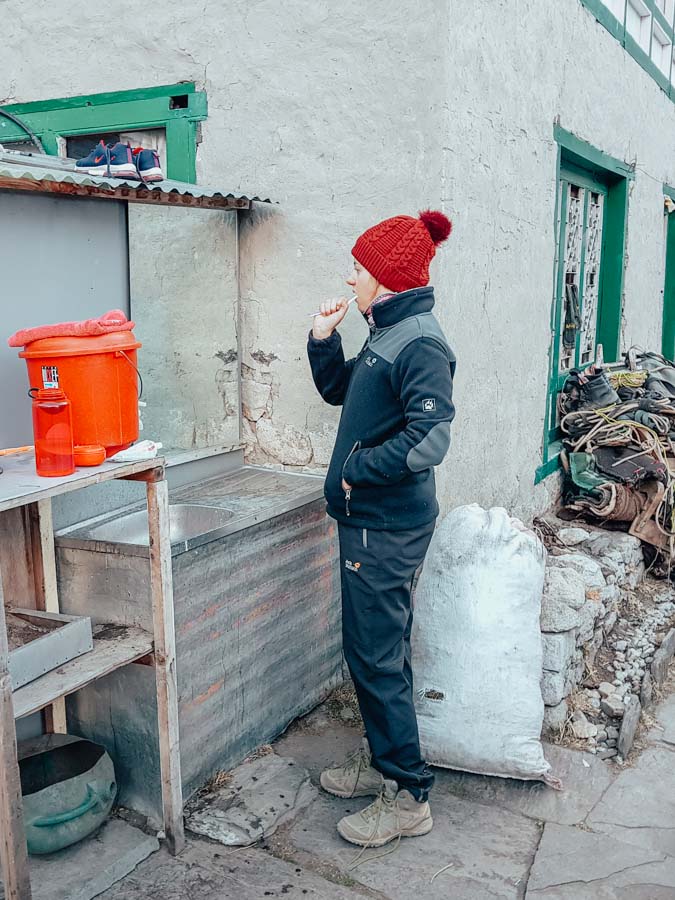
Tea houses on Everest Base Camp
The tea houses are freezing cold. But overall, I was quite impressed by how well-equipped they are.
Most have a fireplace in the communal eating area which is where you’ll spend a lot of your time.
But when it comes to the rooms, some tea houses are more comfortable than others.
None have proper insulation, and this is why having a warm sleeping bag is crucial.
I found the food to be good, with a variety of options to choose from, including pizza, pasta, soups, and curries.
Avoid eating meat after Namche Bazaar, and if you begin to lose your appetite, plain-boiled potatoes are the way to go!
Dal Bhat curry is the local favorite. You’ll often hear the phrase “Dal Bhat Power – 24 hour”, meaning that the curry will keep you going for 24 hours.
The porters swear by this!
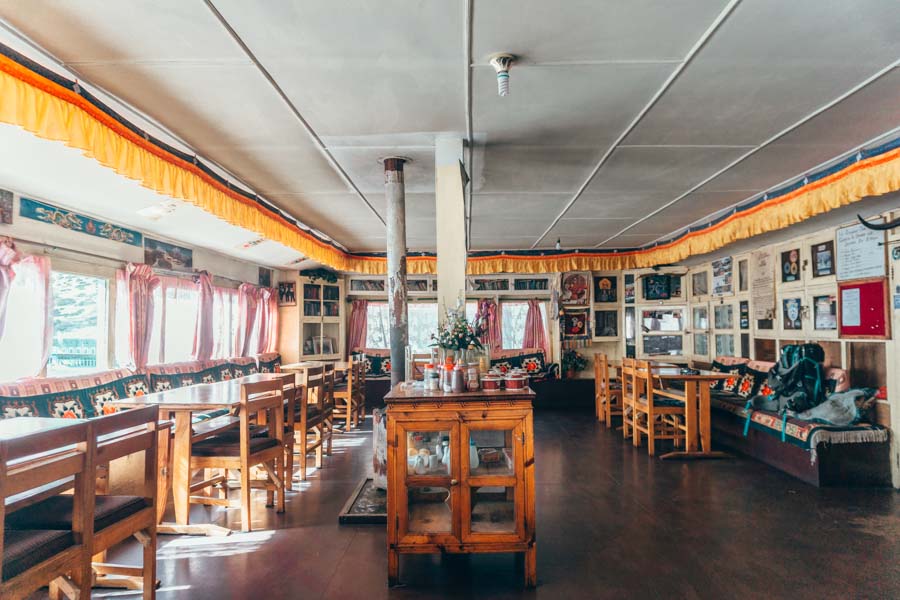
Internet and Power
When it comes to other luxuries such as the internet, the best service provider is Ncell. Reception is relatively good until Dingboche.
From there, you’re off the grid for a few days.
You can purchase Wi-Fi at the tea houses, but this is expensive and not worth it.
Power is available on the mountain, but you pay per plug point.
I bought this 20000mAh power bank, and it worked like a charm.
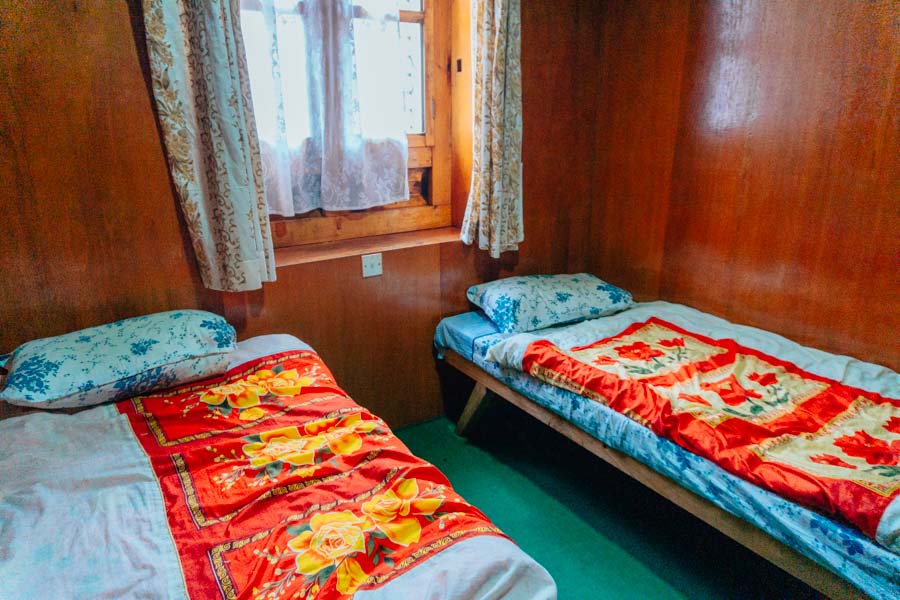
12. Altitude sickness medication
Diamox is the most common altitude sickness medication. It prevents and reduces the side effects of high altitude.
And I know the effects of AMS all too well!
When I trekked to Mount Kilimanjaro, I experienced this firsthand.
I was throwing up, I felt nauseous and fatigued, I had a severe headache, and I completely lost my appetite.
My biggest concern with my EBC trek was that I’d go through these moments all over again.
For Kilimanjaro, I was able to fully recover overnight as our camp was at a lower altitude. I could then continue with the trek, but this wasn’t guaranteed for Everest Base Camp.
I was on the fence about taking Diamox, and if you are considering it, you should consult your GP.
Why I chose not to take Altitude medication
If there’s something you can take to make your Everest Base Camp trek easier, would you do it?
After all, the medication can reduce headaches and assist with breathing.
And trust me, breathing is tough on that mountain!
But there are also a few side effects to take into consideration.
These include numbness, a tingling sensation in your hands, feet, and lips, sleeplessness, and vomiting. These are also the symptoms of AMS, so knowing which is which can be hard to distinguish.
You also need to drink a lot more water, you’ll pee more often and will need to get up many times during the night.
I was confident that if I followed the right acclimatization schedule, my body would adjust naturally.
And it did. You just need to give it time.
Yes, there were days when I had a headache and struggled with breathing. But taking a headache tablet, slowing down, and resting often made it easier.
Note: Every time I wasn’t feeling great, I told my guide. If I took a headache tablet, I notified him as well. Don’t try to cover up how you’re feeling, and don’t mask your symptoms.
In the end, taking Diamox is a decision only you can make.
I am not a medical professional, so the above is just my experience and my reason for not taking Diamox.
If you are planning on trekking Everest Base Camp, and you’re worried about AMS, consider taking medication but consult your doctor first.
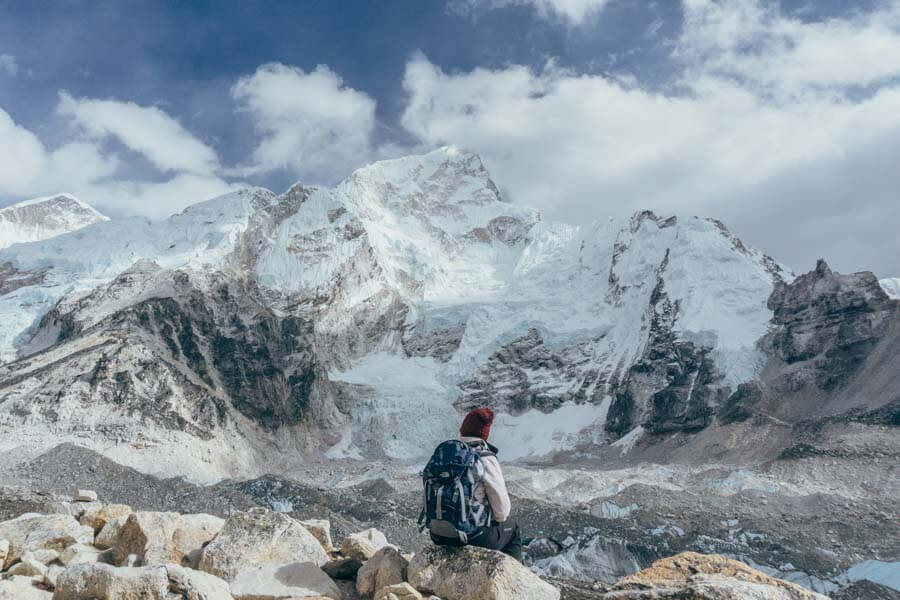
FAQs about how hard is everest base camp
Can a beginner do Everest Base Camp trek?
Yes, if you haven’t done any multi-day treks before, you can still do the Everest Base Camp trek. But you need to be prepared and know what to expect to ensure you are physically and mentally able to do the hike.
Is the trek to Everest Base Camp hard?
Yes, trekking to Everest Base Camp is hard but achievable if you’re in good physical condition. It’s not a technical hike but instead a long one that takes 12 days to complete. The higher altitudes also add to its difficulty.
How fit do you need to be to trek Everest Base Camp?
You don’t need to be super fit to trek Everest Base Camp. But you need to be able to walk for 7 hours a day for 12 days! I recommend going to the gym regularly and swimming in preparation for the trek.
Is Everest Base Camp dangerous?
The hike to Everest Base Camp is not a dangerous one. But it’s the effects of the high altitude that make it dangerous. This is why it’s so important to have a good trek itinerary that allows for rest days.
Overall thoughts on Everest Base Camp trek difficulty
Phew okay. So I’ve covered all the hard parts of the Everest Base Camp trek, and I may have scared some readers off!
But honestly, it’s not that difficult.
Just follow my tips above, make sure you’re prepared for 12 long days of trekking, and do a bit of exercise to gain strength. You can do it!
Next, read my post about what to pack, and you’ll be ready to go.
Have you thought about trekking to EBC? Do you have any questions about how hard it is? Drop me a message in the comment section below!
Psst… Looking for more adventures to add to your bucket list? Check out my other posts!
Pin This!
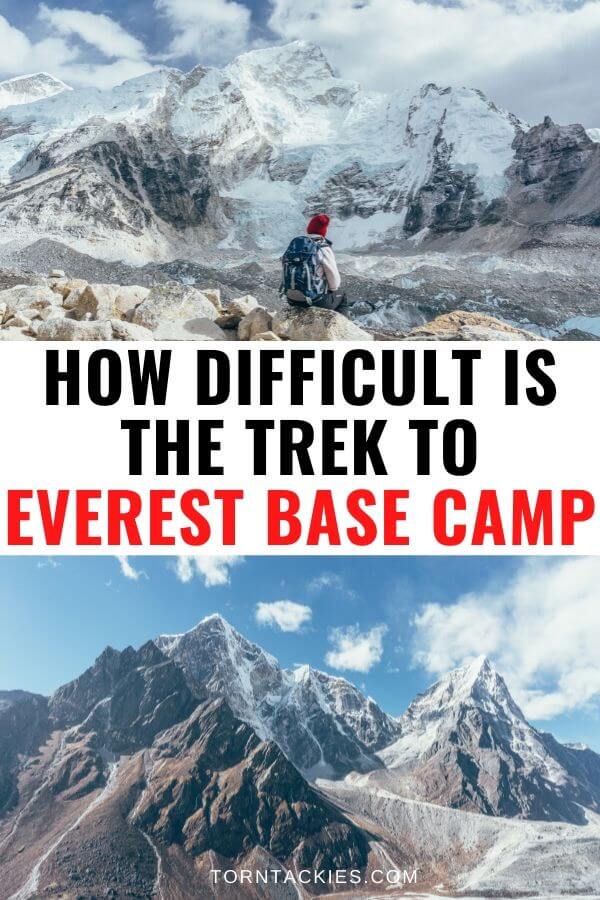
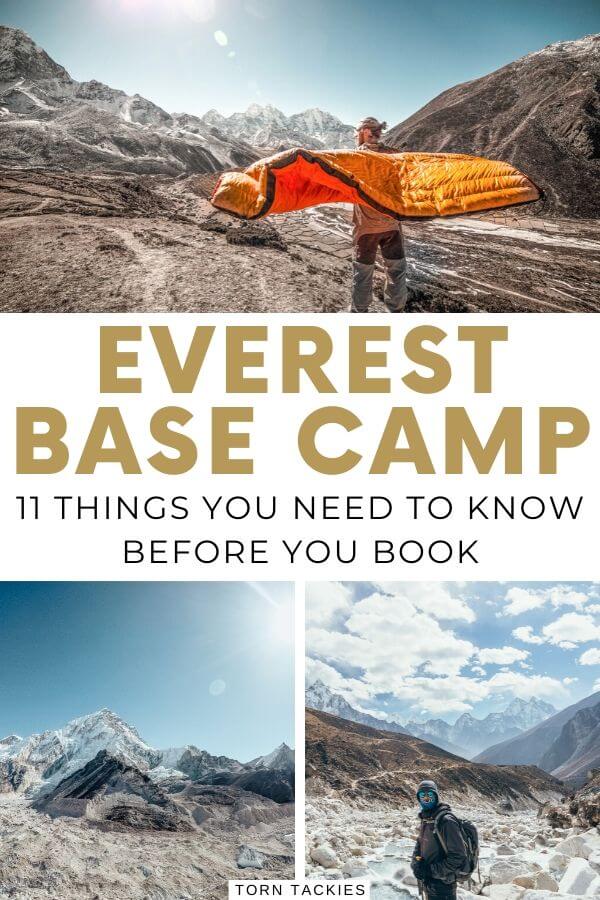


So you felt EBC trek was hard, but for me, for example, it has always been very easy. I have been there 5 times, and last time I was already 64 years old, slightly overweight and had artificial hips on both sides. So how is this possible?
It all depends on acclimatisation. I acclimate extremely well (on Aconcagua last year my oxygen saturation levels were 10% better than anybody else’s in the group, and my heart rate never went above 100 bpm). I can walk up the notorious Namche hill 30-50% faster than just about anybody else, without training.
What I am getting at is that a person going there might feel like you did about the difficulty, or get AMS in Dingpoche and have to turn back, or be like me and feel nothing, just a normal hike. So EBC trek difficulty/acclimatisation is a very personal/genetic thing, and one’s assessment of it is never the absolute truth. It might be somewhat true to a large section of trekkers, but there are also those who will wonder what the fuss really was all about, and others at the other end of the spectrum who have to turn back half way because they just do not acclimate almost al all. In my experience about 15% of trekkers can not get much above Dingpoche 4300m
I hiked up to Kilimanjaro in 2008 and did not feel the altitude at all. Slight hint of emerging headache at the summit was all, but nothing on the way up. From our group of 16 two had to turn back, 4 others had serious problems but made it, 6 had slight problems, 4 did not feel the altitude at all. Follows the Gaussian curve quite perfectly.
Hi Petrus. Thanks for your feedback. You’re very lucky that you’re able to acclimatize so quickly. I remember walking to Namche and it was a slow struggle up the mountain. But I agree, people may find the trek easy, and it’s not a reflection on age, weight or fitness levels, but more so on how your body reacts to the altitude. This is something you can’t prepare for. I’m relieved that I was able to make it to Everest Base Camp because my body didn’t like the higher altitudes! All the best for your future hikes